
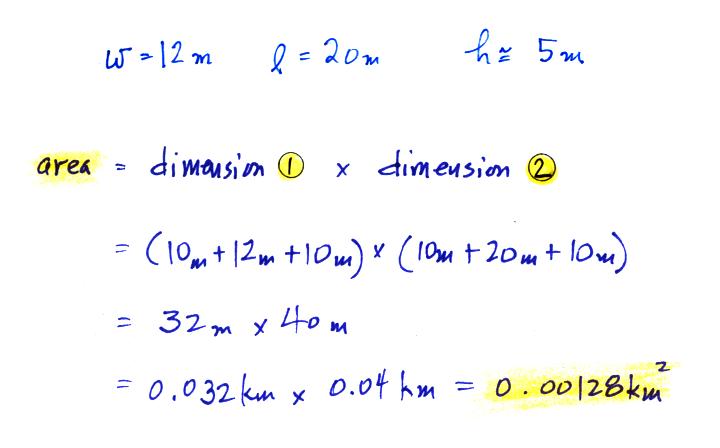
Most of this lecture and the next are
adapted from material in Uman's The Art and Science of
Lightning Protection (Cambridge Univ. Press, 2008;
paperback version 2010). An interesting survey
of the costs of various types of lightning damage can be found
on the first 3 or 4 pages in Chapter 2. Here are are few
examples of the interesting facts and statistics found there:
The 1977 lightning-caused power blackout in
Estimates of the costs of lightning damage
to insurance companies range from 1/3 to $1 billion. In
total about 5% of insurance claims involve lightning (50% of the
claims in
30,000 house fires are caused every year by lightning. About half of the 20,000 wildfires every year are caused by lightning. The cost of fighting wildfires was about $1.5 billion in 2006 (a record year).
Lightning damage to commercial airlines
costs ~$2 billion per year. Damage to military aircraft is
comparable.
Lightning causes damage to perhaps 100,000 computers/year.


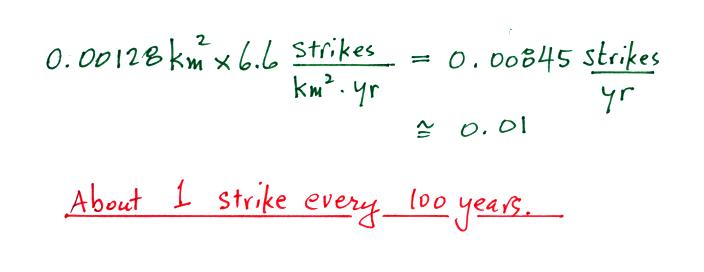


Lightning protection for a house or building usually consists
of 3 components:

For structures less than 50 feet tall
Aa lightning rod provides a
45o or 60o cone
of protection. The 45o

A larger structure can be protected with
multiple rods with overlapping zones of protection.
A different approach is used for larger structures. We
need to recall that the striking distance, d, is the
distance between the leader tip and the ground at the moment
upper connecting discharges are initiated.
 |
 |
In the rolling sphere method, you imagine rolling a sphere of radius d (d is the striking distance) over the structure being evaluated for lightning vulnerability. Parts of the building touched by the sphere are at risk; those parts of the building could be struck. Portions that aren't touched are safe.
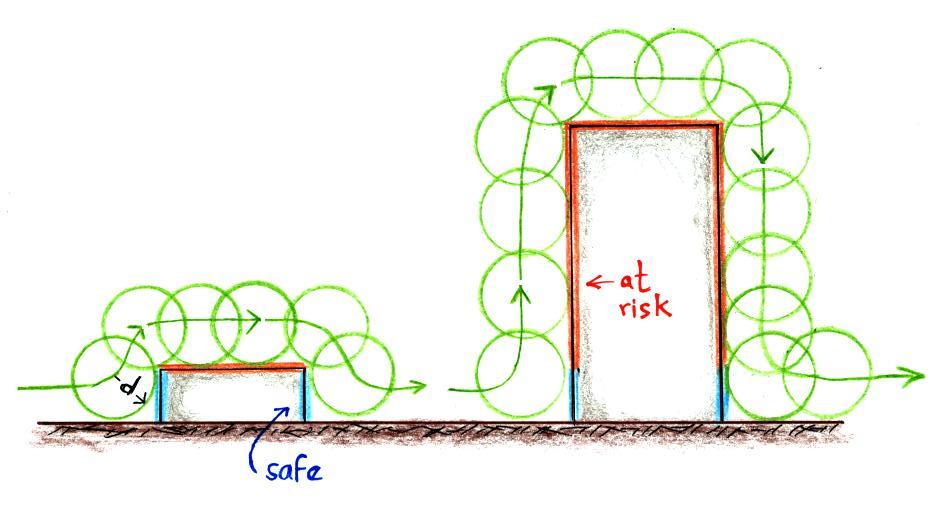
The height of the building at left is less than or equal to
d. The sides of the building aren't touched by the
sphere, they've been shaded blue and are safe. The
sphere does touch the top of the building, it is
vulnerable. Lightning protection would need to be
installed on the roof. The building at right is quite a
bit higher than d. Much of the sides as well as the roof
can be struck by lightning. Protection would need to be
installed on the top sides of the building and the roof.
Fragments of building materials knocked off the sides of
buildings by lightning are apparently a serious hazard to
people on the street below.
Air terminals could be mounted on the top of a tall
buildings. Additionally, the building designers could
make metal window shades and window frames part of the
lightning protection system by connecting them to the down
conductor.

Note the spacing of the air
terminals must be such that the rolling sphere doesn't touch
the roof in between adjacent lightning rods.
What value of d should be used? Researchers have tried
to relate the striking distance to the amplitude of the peak
return stroke that follows. Generally an expression of
the form
is used. An example
curve is shown below

| protection level |
d |
minimum peak I |
% rs>Imin |
| I (highest
level) |
20 m |
3 kA |
99% |
| II |
30 |
5 |
97 |
| III |
45 |
10 |
91 |
| IV (lowest level) |
60 |
16 |
84 |
Protection of a roof
A roof can be protected by multiple lightning rods.
An old question is whether pointed rods or blunt rods work
best. Some recent research (Moore et al. (2000a and
2000b)) suggest that the blunt rods might be
more effective. The NFPA allows either type to be
used. Rods should be at least 10 inches tall.
So called "nonconventional" arrays of points that try to prevent
formation of an upward connecting discharge (dissipation arrays)
or rods that use radioactivity or high voltage to attempt to
initiate an "earlier" upward connecting discharge (thus offering
a larger zone of protection) are generally not thought to be any
more effective than conventional "Franklin" rods (see Uman and
Rakov (2002) for an clear and interesting discussion of this
topic).
A wire mesh
covering the roof of a building or vulnerable installation on
the ground can be used instead of lightning rods. A wire
mesh covered the administration trailer at the rocket triggered
lightning site in Florida for example.
The following table gives recommendations for the spacing of the
wires in a wire mesh (based on Table 4.2 in Uman's "The Art and
Science of Lightning Protection")
| protection level |
d |
mesh spacing |
| I |
20 m |
5 m x 5 m |
| II |
30 |
10 x 10 |
| III |
45 |
15 x 15 |
| IV |
60 |
20 x 20 |
 |
 |
| Overhead wires are used to protect launch installations at the Kennedy Space Center | Launch of an Atlas V rocket at Launch
Complex 41 Cape Canaveral Air Force Station (source
of this image) |
Air terminals should be connected to as
many down conductors as possible. Lightning rods on a
house should be connected to at least two down conductors (at
opposite corners of the house for example).
There are several reasons for this:
(i) The down conductor will have
some resistance and impedance. Connecting inductors or
resistors in parallel reduces the combined impedance.

(ii) The B fields from two down conductors positioned
on opposite sides of a building will point in opposite
directions in the interior of the building.
This will reduce the strength of the B fields inside the
structure and reduce the intensity of voltages and currents
induced in electronic circuits inside the building.

The recommended minimum crossectional area for down conductors is about 50 mm2 for copper (that correcponds to a radius of 4 mm, a diameter of 8 mm or roughly 1/3 inch)

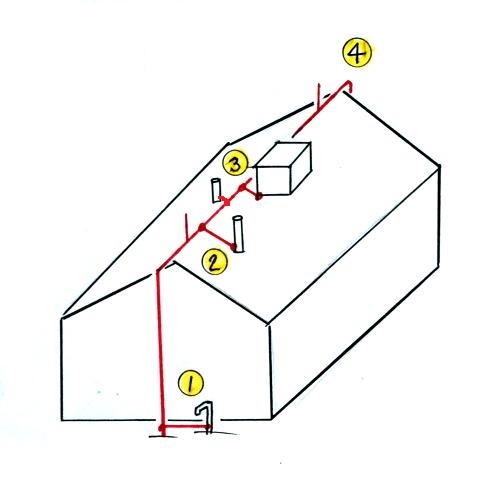
500 kV/m is the average field needed for propagation of
negative polarity leaders
300 kV/m is the average field needed for positive leader
propagation.
Grounding rods are generally copper clad steel and should
be at least 8 feet long. The bottom end should be at
least 10 feet deep.
Grounding can be improved by connecting grounding rods to a
counterpoise, a loop of grounding wire that encircles the
structure. This reduces potential differences inside the
loop.

Here is a table of resistivities of various materials
(Table 5.1 in Uman's "The Art and Science of Lightning
Protection").
Material
Resistivity in
ohm-meters
ocean water
0.1 - 0.5
ground, well &
spring water
10 - 150
lake & river
water
100 - 400
rain water
800 - 1300
commercial distilled
water
1000 - 4000
chemically clean
water
250000
clay
25 - 70
sandy clay
40 - 300
peat, marsh &
cultivated soil
50 - 250
sand
1000 -3000
moraine
1000 - 10000
ose (calcereous
remains)
3000 - 30000

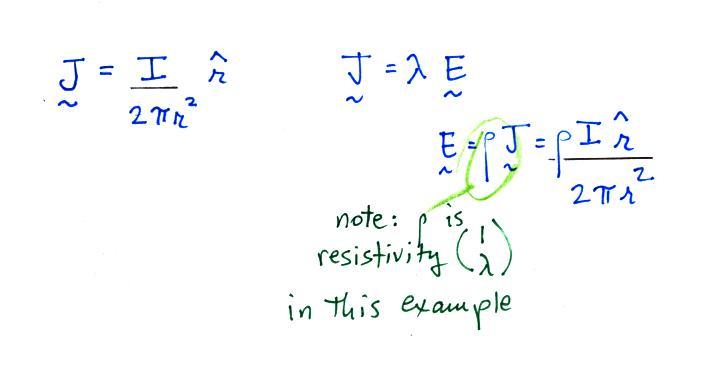

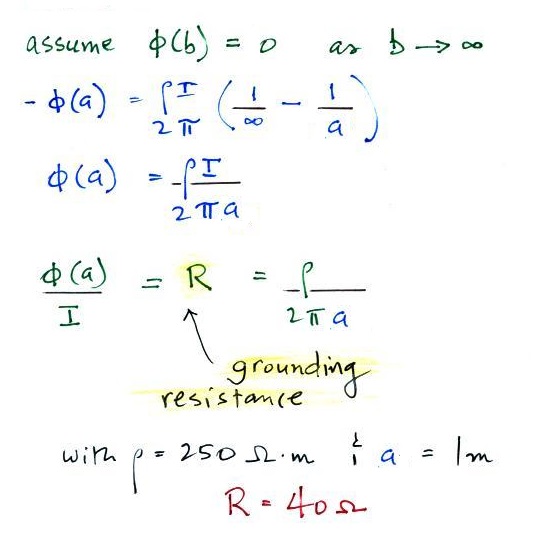
| rod length |
resistivity 100 ohm-meter |
resistivity 1000 ohm-meter |
| 3 m |
35 ohms |
350 ohms |
| 6 |
22 |
220 |
| 9 |
15 |
150 |
| wire length |
resistivity 100 ohm-meter |
resistivity 1000 ohm-meter |
| 50 m |
4.0 ohms |
40 ohms |
| 100 |
2.6 |
26 |
| 200 |
1.4 |
14 |